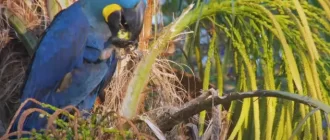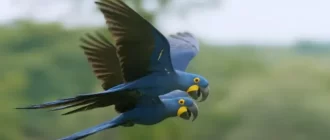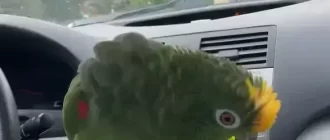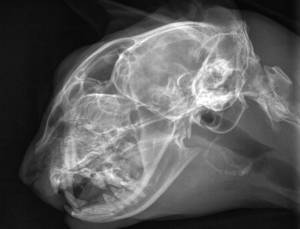How old is your cat? What, you don’t know? We’ll figure it out, don’t worry!
You can pick up a cat from the street or you can give it. In any case, you will be interested to know the age of your new pet. In this article we will try to help cat owners to determine the approximate age of their animal.
It can be hard to inform how old your cat is if you haven’t had him since birth. It is useful to understand roughly how old your cat is so you can provide better age-appropriate care. Your veterinarian can approximate your cat’s age based on tests of his blood and organs, but here is a little guide for the rest people!
Determining the Age of the Kitten
How old is your kitten? It is most convenient to tell the age of young kittens based upon early developmental signs:
- 1 Day Old: Ears folded and eyes are closed. Kittens will not be able to stand.
- 3 Days Old: Ears will begin to unfold.
- 6 Days Old: Eyes will start to open a tiny bit. Ears will open, but kittens will not be able to hear anything. Kittens will begin crawling.
- 10 — 15 Days Old: Eyes will be totally open; however, pupils will not dilate.
- 2 Weeks Old: Kittens will start walking, but they will be very unsteady and uncoordinated.
- 3 Weeks Old: Kittens will now react to sound since their ear canals are open. They will be strolling better, able to utilize the litterbox, and their baby teeth will begin being available in.
- 4 — 5 Weeks Old: Playing, pouncing, roughhousing, and self-grooming starts.
- 6 Weeks Old: Kittens’ eyes will change from blue to their permanent color.
- 8 Weeks Old: Kittens ought to weigh 2 pounds and are huge enough to be made sterile or neutered. They will look like tiny versions of full grown cats. Similar to puppies, you can tell more about the age when the animal is young.
How to Determine the Age of an Adult Cat?
How old an adult cat is more difficult to assess. But there are certain external signs by which we can understand how young or old cat, his/her approximate age.
- Take a look at the cat’s teeth to determine if it has its baby teeth or adult teeth. If it has its permanent teeth and they are white, the feline is at least 16 weeks of age. If its back teeth have yellowish discolorations (tartar), the cat might be 1 to 2 years old. If all of the teeth have tartar buildup, the feline might be 3 to 5 years old. More wear on the teeth are generally seen at 5 to 10 years old. By 10 to 15 years, the feline may be missing out on some teeth and have an extreme amount of tartar buildup.
- Take a look at a cat’s eyes to see if there is any cloudiness in the lens. Like individuals, felines can establish cataracts. A feline with cloudy eyes might be 12 years old or older. Likewise the iris of their eye is smooth when they are kittens, but as they get older, it becomes more jagged and crackly looking.
- Feel its body to see how muscular or bony the cat is. Young cats are more likely to be in shape and be toned. Older felines might have extra skin hanging, and their shoulder blades might extend more.
- Monitor their habits. It’s not constantly the case, however cats are normally more lively when they are more youthful. Older felines choose to sleep more and are not impressed by toys.
Here are detailed information that can help you with this challenge:
Cat Teeth
At eight weeks of age, your kitten will have all their primary teeth: Incisors, Canines, and Molars. At 3.5 to 4 months of age, the long-term adult teeth will begin being available in over the primary teeth. By six months, your feline will have all of their glossy white adult teeth. Teeth may start to dull around the two-year mark. In between the ages of 3 and five years, the teeth may begin developing a little tartar around the gum line (specifically the molars), and tooth wear may be visible.
One crucial part of preserving your feline’s health as they grow older is brushing their teeth with a toothbrush and toothpaste. You might also want to attempt giving your kitty tasty oral deals with. These help fight gum disease, which can trigger significant health issue, like infection, down the line.
Many kittens will reach their full size at one year of age. Certain breeds of felines like the Maine Coon can continue to “complete” approximately the age of 4. If your cat still has that “teen” appearance, he is probably under the age of one.
As a feline age, she or he may develop a paunch that suspends. This feline established her paunch around two years of ages. As felines age, changes in their muscle tone and fur occur. A feline is considered a senior between 8 and ten years of age.
An indoor cat will age around four human years for each one cat year, and an outside cat will age roughly eight human years for each one cat year. This is another good argument for keeping your cat inside your home.
Changes in Fur
When a kitten is born, it has thick, brief fur. As they age, their fur ends up being softer and finer. When a cat reaches senior age, the fur becomes thick and coarse once again and might turn grey in particular locations.
Changes in Muscle Tone
Younger felines will have better muscle tone because they are more active. Older felines may be saggier-skinned and bonier on the rump or shoulder blades.
It is stated that a cat who lives ages outdoors nearly twice as quickly as an indoor feline. At 14 feline years old, an indoor-only feline would be 72 human years of ages, and an outside cat would be 120 years old. This rate of aging starts around the three-year mark.
Whether indoor or outside, a cat ages a lot the first two years. When a feline is almost one year old, they are roughly 15 human years of ages. When the cat reaches two years of ages, he is around 24 human years of ages.
An indoor cat will age roughly four human years for each one cat year, and an outdoor feline will age approximately 8 human years for each one feline year. This is another good argument for keeping your cat inside (or evaluating in your deck or terrace!) Not just will you keep them safe from all the outdoor dangers, but they will probably live a lot longer and be easier to take care of in the long run.
How to Determine That a Cat is Old?
How old is your cat according to her behavior? With increasing age, there are numerous changes to a feline’s physiology and vulnerability to particular diseases. Physiological changes consist of the lowered capability to odor and taste food, decreased ability to absorb fat and protein, lowered hearing, immune function, skin flexibility, and stress tolerance.
Behavioral changes
As felines age, their behavior modifies too, typically as a direct outcome of the physiological changes occurring. The elderly cat adapts slowly to these changes, and it might not appear unless you are particularly looking for signs of aging. Older cats hunt less, spend less time outside, are typically less active, and sleep for more extended periods. They can have a lowered or fussy hunger, be less keen to play or groom, and be more vocal. They likewise tend to become more insecure and therefore potentially more depending on you.
Other behavioral changes can be seen as a direct result of disease, for instance, increased thirst or cravings or hostility related to pain.
How Long Do Cats Live?
Felines are living longer than ever. With improvements in nutrition and veterinary medication, including vaccines and restorative representatives, cats are living to over 15 years of age and in many cases, over 20 years of age. Life expectancy depends on many things, consisting of one essential factor – whether your cat is an indoor-only feline or an outside feline.
Indoor felines usually live from 12-18 years of age. Numerous might live to be in their early 20s. The earliest reported feline, Creme Puff lived to be a fantastic 38 years old.
Outside felines generally live shorter lives due to being most likely to be associated with traumas such as automobile accidents or dog attacks. Outdoor felines are likewise more vulnerable to numerous life-threatening infections consisting of Feline Immunodeficiency Virus (FIV) and Feline Leukaemia that are spread by combating or contact with an infected feline.
Now you know how old your cat is. That’s great!





